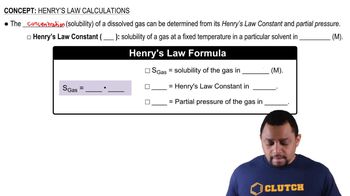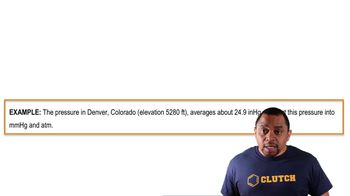Here are the essential concepts you must grasp in order to answer the question correctly.
Partial Pressure
Partial pressure refers to the pressure exerted by a single component of a gas mixture. In this context, it is the pressure of oxygen (O2) in the air, which is 0.21 atm at sea level. Understanding partial pressure is crucial for calculating the concentration of gases dissolved in liquids, as it directly influences the solubility of the gas according to Henry's law.
Recommended video:
Partial Pressure Calculation
Henry's Law
Henry's Law states that the amount of gas that dissolves in a liquid at a given temperature is directly proportional to the partial pressure of that gas above the liquid. This relationship allows us to calculate the molar concentration of O2 in water by using the known partial pressure of O2 and the Henry's law constant for O2 at the specified temperature.
Recommended video:
Atmospheric Pressure and Conversion
Atmospheric pressure is the pressure exerted by the weight of the atmosphere, typically measured in torr or atm. In this problem, the atmospheric pressure is given as 650 torr, which must be converted to atm for consistency with the partial pressure of O2. Understanding how to convert between these units is essential for accurate calculations in gas solubility and concentration.
Recommended video:
Pressure Conversion Example
 Verified step by step guidance
Verified step by step guidance

